Better Homes And Gardens Special Interest Publications Mexican 2021
One thing's for certain: lockdown, after lockdown, after lockdown in the UK has left plenty of time for puzzles, crosswords, and sourdough starters. Not just that, but it's provided precious gardening time, too. Silver linings.
For those who are lucky enough to have outdoor space, there are a whole host of benefits to getting outside more, lapping up the fresh air, and turning your hand to some gardening while you're at it. Whether you prefer cultivating your garden with bright, decorative blooms, dotting the land with sweeping climbers and luscious ferns, or simply like growing your own veggies, it's a great way of clearing your head, and a simple means of developing your horticultural knowledge, too.
Not sure what to grow this year? Mixing up the types and varieties of flora you plant is a big positive, according to BBC Gardeners' World presenter and landscape designer Mark Lane.
"Searching for and growing new plants is good for both the soul and your garden," he shares.
His top tip? "I've made it my mission to learn a new plant each month - there is a real sense of excitement as to how each one will perform, as I've never grown them before. By mixing up what you plant, you'll attract more wildlife into your garden, and create an outdoor space rich in biodiversity," he shares.
This content is imported from {embed-name}. You may be able to find the same content in another format, or you may be able to find more information, at their web site.
Plus, as Hilary Wood, Gardens Manager at Blenheim Palace points out, gardening has actually been proven to both improve your mood, and reduce your stress levels. "The scent of certain plants can have really therapeutic values," she shares.
Ready? Novice or not, broaden your horizons and keep reading for the shrubs to have on your radar, as recommended by nine celebrity gardeners.
9 flowers and plants recommended by celebrity gardeners
Award-winning landscape gardener and presenter on BBC's Garden Rescue Harry Rich of The Rich Brothers and Rich Landscapes
The plant: Magnolia Sieboldii
"I'm really looking forward to growing M. Sieboldii," shares Harry. But why? "It's a great choice if you want to select a later flowering magnolia, which in turn alleviates the risk of frost damage as it flowers from May to August," he explains. "I'm interested by the way it has a more successional flourish of flowers, rather than one big display. The Downturned milky white petals invite you to look up into the flower, revealing its crimson stamen," he adds.
How to: Harry shares that he has always wanted a magnolia, but his garden is prone to late frost which could damage the flower, especially if followed by a quick thaw. If your garden is the same, fear not. "To help this, a sheltered position which doesn't get early morning sun will help to slow this down. It prefers a sheltered position with a little shade anyway, so I will position it next to a path which will allow me to appreciate Its beautiful scent and its natural habit," he shares.

Magnolia sieboldii
thompson-morgan.com
£59.99
TV horticulturist and Love Your Garden presenter Frances Tophill
The plant: Eriocephalus africanus (South African Rosemary).
"I actually got this plant last year and despite growing beautifully in size, I only got one flower," she says. "It is a profusion of tiny, white flowers in the late summer in theory, so I am really hoping that next year, with the right care and attention, it'll flourish. I have long loved herbs and anything useful or edible, so adding this entirely new species to my collection was really exciting," she explains.
How to: Frances explains that they are pale in colour with reduced foliage, meaning they need high light levels and not too much water. "I have mine in a pot, with a free-draining compost and plenty of sun. I have kept it a little sheltered from the frost and wind, as South African species can be a little tender. Cutting the root is incredibly easy: just pop it in compost. It requires very little aftercare," she shares.
Click for more information on the Higgidy Seeds of Joy competition, which Frances is leading. It's a nationwide competition for local, unloved community spaces to be made over into community veg gardens.
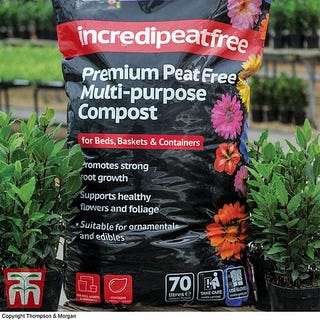
incredipeatfree Multipurpose Compost

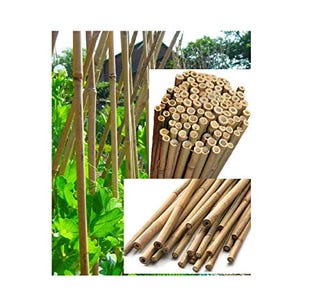
Durable Bamboo Cane Garden Stakes 5Ft x 14-16mm
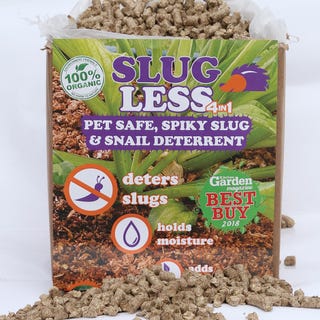
Slugless - pet safe spiky slug & snail deterrent
Award-winning garden designer and teacher at The Sussex Garden School Juliet Sargeant
The plant: Canna Lilies
"I love the exotic exuberance of canna lilies and can't wait to plant some this year," Juliet says. "They are not just fantastically saturated in bold colours, but also, they flower for months and fill that 'down time' in September and October. So, for a fancy plant, they are surprisingly useful," she explains.
How to: The expert explains that cannas like sun, but tolerate a little bit of shade, too. "They like rich, moisture-retentive soil with some added fertiliser, and some - like C. Erebus - can be grown as pond-edge plants," she shares. Do note that, unfortunately slugs like cannas as much as Juliet does, so she advises making sure that you sprinkle wild-life friendly pellets in early spring, or spray with nematodes, to kill the slugs.
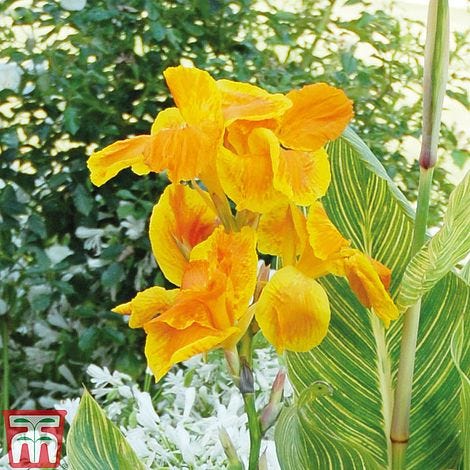
Canna 'Tropicanna Gold'
thompson & morgan thompson-morgan.com
£12.99
Gardening blogger and author of The Virgin Gardener Laetitia Maklouf
The plant: Agastache (Anise Hyssop)
"I'm obsessed with late summer flowers. They're the heroes which will take me into October (and often beyond) when everything else starts to go a bit brown, and the lush newness of the earlier part of the year is in short supply," she explains.
Her go-to is usually salvia, but this year she's trying agastache, which is totally new to her.
"They have the same upright form as a salvia, providing an essential spiky element to the border, and they are an absolute magnet for bees, my other non-negotiable)," she shares.
How to: "I'm normally someone who buys in ready-grown plug plants for this sort of thing, but this year, when we'll probably be stuck at home for a while longer, I'm tempted to sow them from seeds. Why not try it?", she recommends.
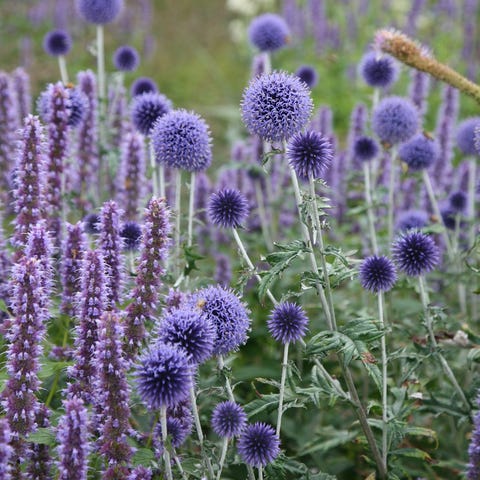
Agastache and Echinops plant combination
Gardener and BBC broadcaster Pippa Greenwood
The plant: Anemone 'Frilly Knickers'
"They're a delightful herbaceous anemone with classic white flowers and yellow centre but with really 'frilly' petals, hence the apt name," shares Pippa. "It was voted favourite at last year's HTA Virtual New Plant Awards and is a really lovely plant, great for the back end of summer and into autumn colour."
How to: This one's for the beginners, or those who don't want high-maintenance. "They're easy to grow and easy to please, so a perfect plant for newer gardeners as well as those who, like me, are simply on the lookout for lovely plants we've not grown before!"
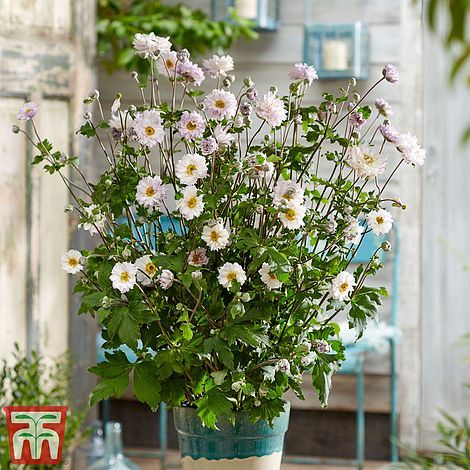
Anemone 'Frilly Knickers'
thompson & morgan thompson-morgan.com
£7.99
BBC Gardeners' World presenter and landscape designer Mark Lane
The plant: Vitex agnus-castus 'Delta Blues'
"With aromatic grey and green foliage and panicles of purple and blue fragrant flowers, Vitex agnus-castus 'Delta Blues' may sound like a rare plant, but this is a new, more compact variety of Vitex that was grown 25 to 30 years ago," he explains.
So, why this year? Well, he's been looking for a blue or purple shrub to add to his blue and yellow borders and wanted something that would complement the Perovskia 'Blue Spire'.
"It's hardy down to -20 degrees Celsius and can be kept in check by pruning back at the end of November, just like Buddleja." An ideal choice if you're after a plant that flowers later in the season.
How to: "They'll grow happily in organically-rich soils where water is scarce, but I'm also thinking of growing one in a pot with ample drainage holes" Mark explains. This one will attract bees and butterflies, shares the landscape designer. "By getting in touch with the natural pulses of the natural world, we can do our part in creating bee corridors and at the same time we can discover – or even rediscover – the magic of getting out into the fresh air and spending time in nature." Hear, hear.
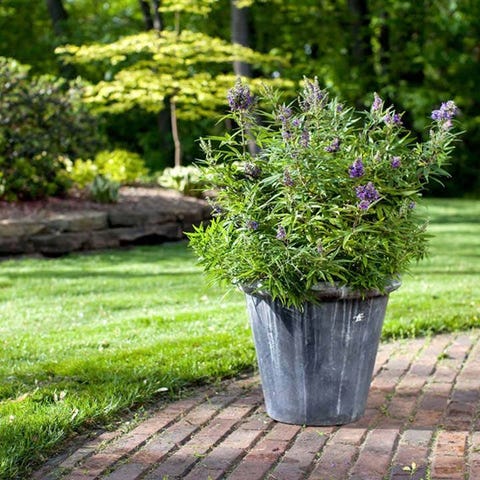
Vitex agnus-castus Plant - 'Blue Puffball®' FIRST EDITIONS®
Gardener and author of Rootbound, Rewilding a Life, Alice Vincent
The plant: Papaver rhoaes, 'Amazing Grey'
Alice is your go-to for recommendations if you're short on space, or wondering what plants to sow on a balcony or balconette. "I'm particularly excited about growing this one. It has a soft and blousy rosette of ruffles ranging from dark grey to dusky pink and promises to be easy to grow."
Any reason for planting this specific plant in 2021? "I'm excited about it simply because it looks too beautiful to be true, the kind of flower one sees in illustrations and storybooks. I'm also intrigued to see what the seedheads from those left standing will be like, for some autumn structure," she shares.
How to: She'll be sowing it directly in the sunniest corner of the bed between March and May for some drama in late summer, and advises you do, too.

Poppy Seeds - Amazing Grey
Gardens Manager at Blenheim Palace, Hilary Wood
The plant: Royal William rose
"It's so hard to choose, but one of my favourite flowers is the Royal William rose varietal," shares Hilary. "It's deep, velvety red blooms are so striking, and its lovely rich fragrance is heavenly. Plus, this medium-sized shrub rose will continuously bloom throughout the summer months," she explains.
How to: "Other than dead-heading on a regular basis, little care will be required to give months of pleasure."
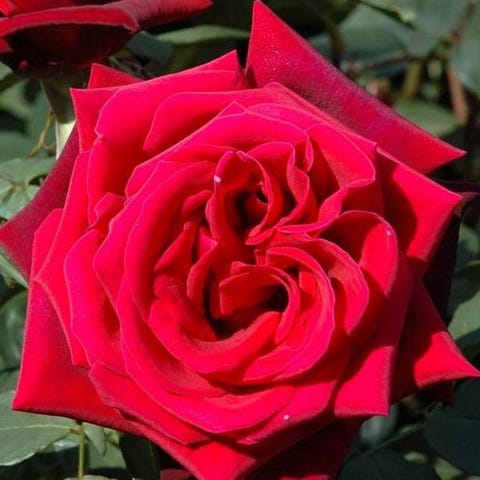
'Royal William' Bush Rose - 4L Pot
Gardening blogger Hannah Schlotter of Hannah Grows
The plant: Cardoon Thistle (Cynara cardunculus)
"I'm excited to try growing cardoon thistles this year. Why? Their dramatically tall flower stems inject height into the garden, and their thistle-like flower heads bloom in a vivid purple and look great in the summer," she explains. They also work well in flower arrangements, can be dried, and are cousins with artichokes, meaning they're edible, too.
How to: Cardoons are low maintenance, shares Hannah, but do plant in full sun and give them a good mulch with compost each autumn to keep them happy.
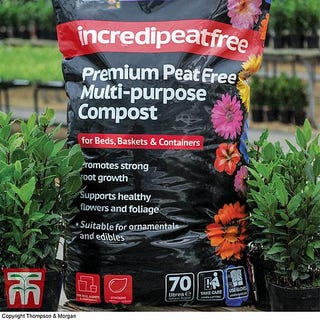
incredipeatfree Multipurpose Compost
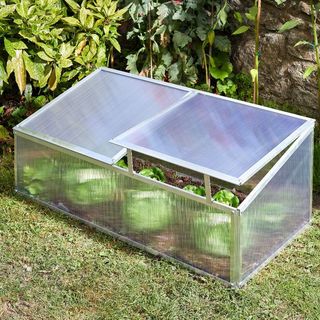
Aluminium grozone coldframe

Super Scented Sweet Pea Growing Kit
Thompson and Morgan
£10.99

Like this article? Sign up to our newsletter to get more articles like this delivered straight to your inbox.
SIGN UP
In need of some positivity or not able to make it to the shops? Enjoy Good Housekeeping delivered directly to your door every month! Subscribe to Good Housekeeping magazine now.
SUBSCRIBE NOW
This content is created and maintained by a third party, and imported onto this page to help users provide their email addresses. You may be able to find more information about this and similar content at piano.io
Better Homes And Gardens Special Interest Publications Mexican 2021
Source: https://www.goodhousekeeping.com/uk/house-and-home/gardening-advice/a35382693/gardening-trends-2021/
Posted by: leewelinigh.blogspot.com

0 Response to "Better Homes And Gardens Special Interest Publications Mexican 2021"
Post a Comment